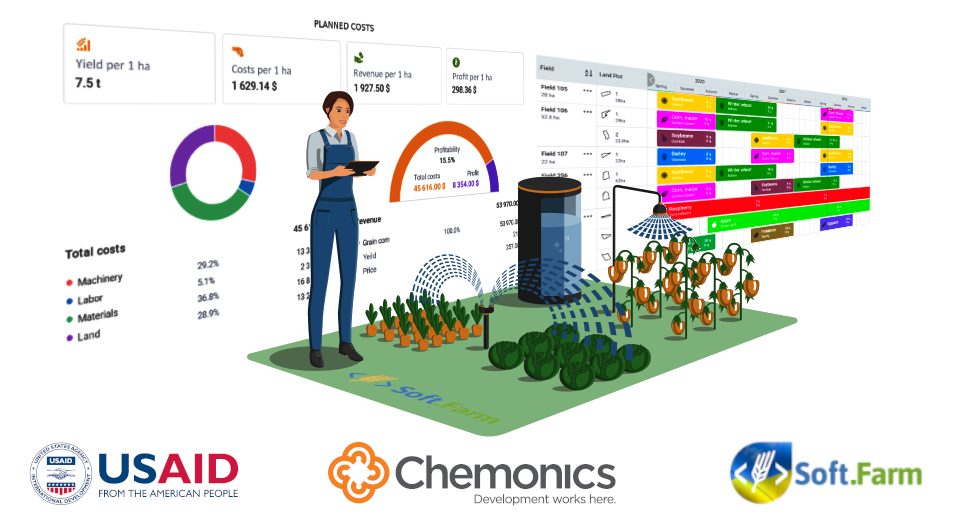Automation of crop rotation planning for farmers and medium-sized agricultural enterprises
17.05 2022

Crop rotation in agriculture is the practice of growing different types of crops in the same area over several growing seasons. Its application reduces dependence on one set of nutrients and reduces the chance of developing resistant weeds, pests and diseases. It aims to continuously increase the yield of major agricultural crops by improving the crop structure, placing the major cereals, vegetables and fruit crops, taking into account their optimal combination and correct predecessors, introducing new high-yielding varieties, intermediate crops, etc., which helps to improve soil structure and improve the sustainability of the agricultural system as a whole.
Crop planning most often begins with the identification of demand and on-farm needs. When determining the planned sown areas, one should take into account the competitiveness of the products of certain types of crops, as well as restrictions in crop rotations and material and technical resources. The crops themselves are distinguished by the crop, by the number of crops sown in one area, and by the timing of sowing, and the sown plants can be annual and perennial. Given all this, it is very important to draw up a competent sowing plan not only for the next season, but also for several years ahead.
The Soft.Farm team took into account most of the aspects of crop planning, on the basis of which improved and expanded the functionality of this module. The new interface not only provides a clear visualization of sown areas, but also allows to allocate a certain area for different crops in accordance with the season and take into account the needs of each of them to the maximum. Now you do not need to store all the information about the sowing in different Excel files. We have combined information about the site, crop predecessor, variety, planned and actual data on yield and gross yield in a single table. Among other things, crops can now be created both by crop and by crop rotation scheme, according to which the web service automatically offers recommended crop options for crops, taking into account predecessors.
Perennial plantations, like arable lands, pastures and hayfields, are agricultural lands, so we have added to the system the ability to plan crops and harvest crops for perennial crops intended for obtaining fruit, berry, technical and medicinal products. Directories of crops and their varieties in the web service can be supplemented and expanded by assigning them certain colors and icons in the general table of crops for better visualization. It should also be noted that after filling in the data, the program, using optimization algorithms, calculates the economic costs itself, so there is no need to waste your time on profit calculations. By modifying the data in the table, you can immediately see the real changes in economic indicators.
System improvements have also taken place in the module for creating technological maps, which are used for the optimal organization of agricultural production. A technological map is a document that plans the technology, scope of work, means of production and the labor force necessary for their implementation, as well as the amount of material costs for growing a particular crop in a certain area. Such maps are compiled for each crop for one field or group of fields. The updated interface makes it possible to see which operations need to be performed, in what sequence and with what frequency, how much time is spent on each operation and what tools and materials are needed for this. When creating technological maps, it is very important to justify the use of vehicles and agricultural machines for each operation in order to fully use the power of tractors and achieve high quality work. They also help to plan labor costs, calculate the cost of fuels and lubricants, and provide for other costs for third-party services. Created technological maps can be copied and exported. Thanks to the new analytics block, they display not only planned indicators, but also the cost-income part with the calculation of profitability and expected profit.
High-quality crop planning, development of technological maps and compliance with technological standards increase the productivity of each hectare, ensure soil protection system for their cultivation, and also make it possible to use resources most economically and productively. Using the system helps both large enterprises with a land bank of more than 1000 hectares, as well as small agricultural firms and private farms. Try new features today, plan with Soft.Farm!
Back to news list